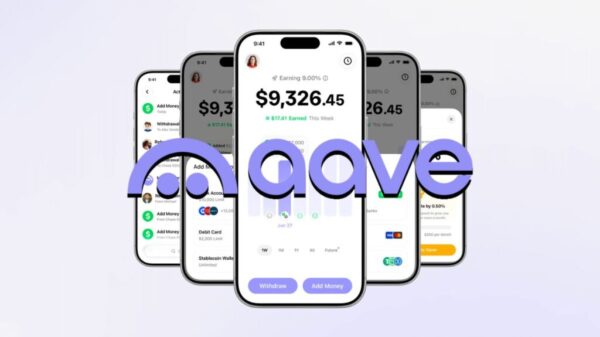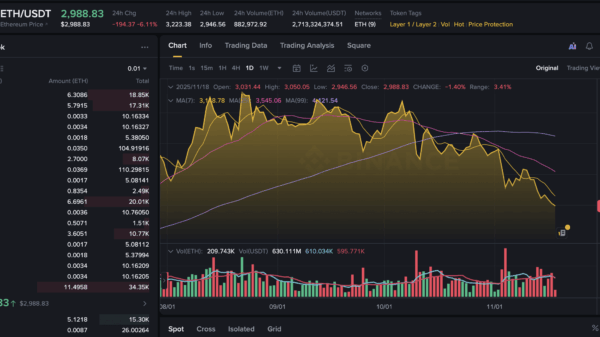Bitcoin is on the verge of a significant technical indicator known as a death cross, which has traders on high alert regarding potential price outcomes. The latest market activity saw Bitcoin drop sharply on Tuesday, hitting a low of $102,422 after previously trading at $107,482. At the time of writing, Bitcoin was down 0.23% over the last 24 hours, sitting at $104,880, but managed a weekly gain of 2.80%.
This recent downturn follows a period of market stagnation following the flash crash in October. The anticipated bearish death cross occurs when the short-term 50-day moving average (MA 50) falls below the long-term 200-day moving average (MA 200). Currently, the daily MA 50 is trending downwards, indicating that this death cross could materialize in the coming days. Should this cross be confirmed, it would mark the second occurrence this year, following an earlier instance in April. Notably, this event would be the fourth death cross for Bitcoin since the beginning of 2023, with previous instances noted in April, August, and September.
Historically, death crosses have proven to be unreliable indicators when considered in isolation. The last three recorded in September 2023, August 2024, and April 2025 coincided with local price bottoms for Bitcoin. Whether this trend will hold true this time remains uncertain.
According to data from Glassnode, Bitcoin is currently trading within a range defined by two critical price levels, the 0.85 and 0.75 cost-basis quantiles, at $108,500 and $100,600, respectively. Traders are closely monitoring these levels as they have historically served as both support and resistance. A decisive movement beyond either of these points could signal the next trend direction for the cryptocurrency.
In the near term, if Bitcoin surpasses short-term resistance levels around $111,000 and $116,000, increased volatility may ensue. Presently, Bitcoin is navigating a crucial inflection zone, and market sentiment appears to be cautious. Signs suggest a potential local bottom may be forming around the $100,000 mark, with the midterm support range likely to be between $100,000 and $108,000.






































































